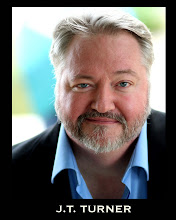.The Mayans had no central government. Rather, they shared religion and culture in many city-states, not unlike ancient Greece. Think of wide areas, usually with a central, ruling city.Each of these areas or kingdoms had a absolute ruler, (k’uhul ahaw, divine ruler), from the gods.Typically, even with a absolute ruler, many of the kingdoms had advisors to the King that helped him rule.
Since territory or land was wealth, there were many wars between Kingdoms. Rivalries between Kingdoms was common, as was the taking of political prisoners to insure fealty. There were many trade agreements as well, as various areas had resources that others did not.
As with many cultures, the Mayans had a caste system, with the King and his family at the top, followed by nobles and priests.( The nobility (Almehenob'), the priesthood (Ah'kinob'),Then came the common people, freemen, farmers and artisans, (Ah'chembal uinieol'), and the slaves (Pencat'ob'). We also know they had terms for various occupations, such as Itz’aat, “artisan”; Uxul, “stonecutter”; b’aah uxul, “head stonecutter”; Ah Bich’ul, “sculptor” or “polisher”; Ah Tz’ib, “scribe”; and for Priest or Shamans as: Ah K’uhun, Ah K’uhul Hu’n, and Ah K’uhuun, terms variously interpreted as “he of the holy books" "keeper of the paper/headbands,” or “he who worships"
.
The central city contained palaces, ball courts, homes for nobles and of course pyramid temples, where religious ceremonies were performed.(There is a picture of one side of a ballcourt at the left. This one is in the central Plaza in the city of Tikal). A city could have a population as high as 45,000, with many more people living in the surrounding countryside. On a visit to Iximche, my guide told me that that city was actually divided by a central ditch, the poorer citizens living on one side, the nobles on the other. In most of the current ruins, the pyramid temples are the focal points, some looking like a classic pyramid, others having distinctive combs that rose 70 feet or more into the air. Below is a photo of the Temple of Inscriptions in Tikal.
A few more cultural points:
No beasts of burden, the Maya used slaves for all work.
No metal was used, wood and stone only.
The Mayans believed that a flattened forehead and crossed eyes were signs of beauty. Noble children and others had boards tied to their foreheads, and had wax beads tied to dangle before their eyes to get that look. Ritual scarring was common among the elite, and the nobility often had their teeth sharpened to points.
The Mayan were very advanced in agriculture especially the growing of maize. This was used in trade, as well as sea shells, and cocoa beans. (Chocolate was a ceremonial drink).
The Maya had a system of writing that has only recently been fully understood, indeed there is still some discussion about the translations. They carved into stone, painted pottery, and did have books which they created by painting on fig tree bark. Many of those books were destroyed by the invading Spaniards. Several did survive, and my next entry will discuss the Popul Vuh, a wonderful key text from the ancient Mayans.
The Mayans also wrote numbers and they had a symbol for zero, which was very unusual among ancient civilisations. The Mayans were excellent astronomers and they could predict eclipses. This combination of astronomy and a strong numbering system gave light to a very elaborate calendar system, which we will visit in a future blog.
J.T. Turner
Mayanist
A photo of me at Temple 3, in the Central Plaza, Tikal.




